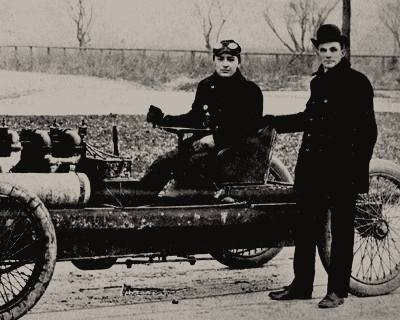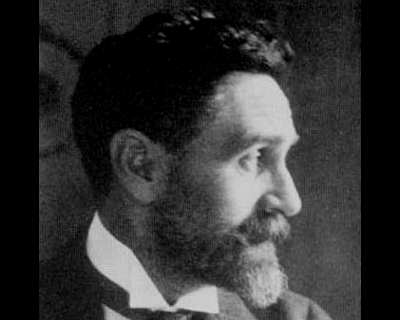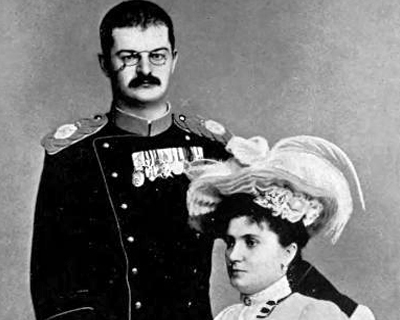John T. Daniels / Wikimedia Commons / CC-BY-SA-3.0 / GFDL
1 – First powered airplane flight by the Wright Brothers
On December 17th, 1903, Orville and Wilbur Wright made aviation history in Kitty Hawk, North Carolina, by making the first controlled and powered human flight, having invented and built the world’s first successful airplane.
Orville piloted the gasoline-powered, propeller-driven biplane, staying airborne for 12 seconds and covering 120 feet. The plane traveled at a speed of only 6.8 miles per hour.
The brothers made four flights on the day, however, following the fourth flight, a powerful gust of wind flipped the plane over several times.
The plane was severely damaged and was to never fly again. It has been ed in the Smithsonian Institution in Washington, D.C., since 1948.
Analysis of the plane in 1985 demonstrated that the Wright’s plane was extremely unstable and almost unmanageable by anyone but the brothers, due to the fact they had trained themselves in their 1902-designed glider.
Following years of battling over patents, The Wright Company was incorporated on November 22th, 1909.
The brothers sold their patents to the company for $100,000 and also received one-third of the shares in a million-dollar stock issue, plus a 10 percent royalty on every airplane sold.
Wilbur died after a short illness in 1912, the stress of his life’s work and running the business had taken its toll. He died on May 30th, at age 45.
Orville sold the company in 1915, having a dislike for the business side of things. On April 19th, 1944, the Howard Hughes piloted Lockheed Constellation, flew from Burbank, California, to Washington, D.C. in 6 hours and 57 minutes.
On the return journey, it stopped at Wright Field, giving Orville his last flight, it had been over 40 years since his historic first flight.
The wingspan of Hughes’ plane was greater than the distance of his first flight. Orville died four years later following a second heart attack, on January 30th, 1948. He outlived his brother by more than 35 years.
2 – The Ford Motor Company was formed

The Ford Motor Company was launched in a converted factory in 1903 with the help of twelve investors, notably John and Horace Dodge, founders of the Dodge Brothers Company.
At the time of the companies foundation, Henry Ford was 39 years of age. The company went on to become one of the largest and most profitable companies in the world.
It is also one of the world’s largest family-controlled companies, having been in continuous family control since 1903.
In 1908, Ford introduced the Model T, succeeding in Henry’s goal of producing an affordable, efficient and reliable automobile for everyone. By 1920, almost half the cars in America were Model T’s.
The Ford company were also renowned for their innovations in developing mass-production methods, such as large production plants, the use of standardized, interchangeable parts and the world’s first moving assembly line for cars, in 1913.
Furthermore, Ford introduced an eight-hour working day, with a $5 daily wage for his workers, in 1914.
By cutting the working day by an hour and more than doubling workers wages, productivity was greatly improved, setting a new standard across the industry.
In 1919, Ford handed the presidency to his son, Edsel, yet, he maintained control of the company’s operations. However, following Edsel’s death in 1943, Ford returned as president before handing power over to his grandson, Henry Ford II, in 1945.
Ford died, two years later, at home in Dearborn, Michigan, aged 83.
3 – Roger Casement filed his report on abuses in the Congo

The Casement Report was a document compiled and written by British diplomat and Irishman, Roger Casement. The report detailed abuses in the Congo Free State, which King Leopold II of Belgium had taken private ownership of.
There had been widespread reports of human rights abuses in the Congo for years prior to the Casement Report.
It wasn’t until 1903 that the British House of Commons passed a critical resolution on the Congo, instructing Casement to investigate. This came two years after the death of King Leopold’s cousin, Queen Victoria.
The report played a hugely significant role in Leopold finally relinquishing his private holdings in Africa. Leopold had taken ownership of the Congolese state in 1885, having been granted by the Berlin Conference.
In the intervening years, Leopold grew his personal wealth by exploiting Congo’s natural resources, primarily rubber.
Casement befriended journalist E.D. Morel, a critic of Leopold’s actions in Congo, prior to the publication of his report in 1904.
Along with Casement’s assistance, Morel founded the Congo Reform Association, an organization that worked towards ending Leopold’s control of the Congo Free State.
However, in spite of Casement’s report findings, Leopold retained personal control of the Congo until 1908, when the Belgian Parliament, under intense pressure, annexed the Congo Free State and took over its administration, creating the Belgian Congo.
In 1912, the Congo Reform Association dissolved itself having achieved its’ goal.
4 – Serbian King & Queen were assassinated

At around midnight on the 10th June (28 May 1903 by the Julian calendar) the Serbian King Alexander Obrenović and his wife, Queen Draga were assassinated inside the Royal Palace in Belgrade.
The Queen’s brothers, the Prime Minister, Dimitrije Cincar-Marković, and Minister of the Army, Milovan Pavlović, were also killed that night
While the exact events on the night of the coup are unclear, what is known is that the King and Queen were eventually discovered having hidden inside a wardrobe. Both were then savagely killed.
They had their bodies mutilated and were then tossed from a second-floor window onto piles of manure. The murderers, masterminded by Serb nationalist Colonel Dragutin Dimitryevich, went unpunished for their actions.
The coup ended the House of Obrenović, which had been ruling Serbia since the middle of the 19th century. The army immediately proclaimed Prince Peter Karageorgevich as the new King.
The Obrenovich and Karageorgevich dynasties were both founded by leaders of the Serbian struggle for independence from the Turks and had alternated as rulers of Serbia.
The coup played a significant role in Serbia’s relations with other European powers, with the Obrenović’s allied to Austria-Hungary, while the Karađorđević’s having close ties to both with Russia and France.
Both dynasties were receiving financial support from their powerful foreign sponsors.
Colonel Dimitryevich went on to found an undercover terrorist group known as the Black Hand.
The group went on to be involved in the 1914 assassination of Archduke Franz Ferdinand in Sarajevo, the event that lit the spark for World War I.
